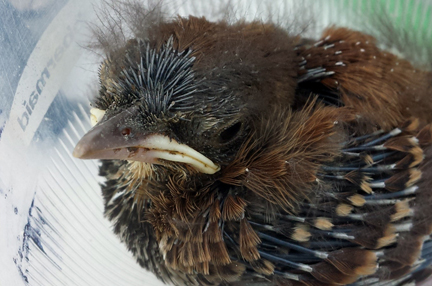By Matthew Holland, Andrew Mackay and Brian Allan
Mosquitoes complete the first part of their life cycle (larval and pupal stages) in aquatic environments, where the larvae of many species feed on small suspended particles, including bacteria and other microorganisms. Adult female mosquitoes looking for a suitable place to lay their eggs often rely on chemical compounds released by the microbial decomposition of organic detritus to identify aquatic habitats that are likely to contain sufficient food for the development and survival of their offspring. The diversity and abundance of these microorganisms, and therefore the nature of the chemical signal released from an aquatic environment, is greatly affected by the amount and type of organic material added. Plant detritus (example: fallen leaves, grass clippings, etc.) is often the main source of organic enrichment in the types of aquatic habitats typically used by mosquitoes.

By Loren Merrill, Ph.D.
This project examines the impact of nest-site selection along a habitat urbanization gradient—specifically, active nests from a handful of local species that breed in shrublands, including the American Robin, Gray Catbird, Brown Thrasher, Northern Cardinal, Eastern Towhee, and Field Sparrow. The Pollinatarium property was chosen as an example of shrub habitat in a heavily modified landscape.

By Sybil Anderson, Marcelo S. Vieira-Filho, Christopher Lehmann and Brenda Riney
The Champaign-Urbana (CU) region is a micro-urban area surrounded by cropland so there are a number of possible sources of ammonia including agriculture, urban centers, interstates, parks and a major university campus. This research study looks at the transect of CU, roughly perpendicular to prevailing winds. The intent of the study is to illuminate how representative ammonia concentrations are of a surrounding region and to examine the impact of land use on those ambient concentrations.
